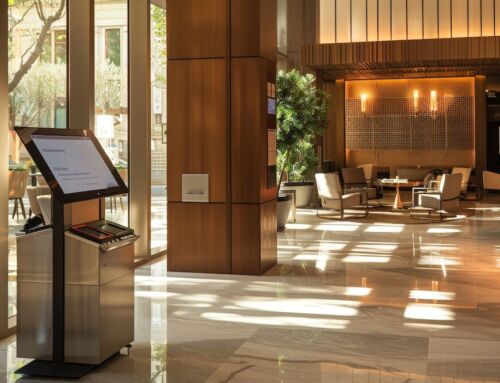Self-service kiosks are popping up in more and more locations at a rapid rate. If you’ve ever wondered why, there’s one very good answer – people love them.
The body of evidence backing up that claim is growing all the time. According to one study into consumer attitudes to retail technologies, a massive 73% of shoppers said they preferred self-service options over engaging with a shop assistant or cashier. Another found that 49% of consumers would like to see self-service technologies in every store.
In times gone by, it has been taken as a given that, for want of a better phrase, ‘the human touch’ is essential to delivering exceptional customer experiences in retail, hospitality, leisure etc. But while the apparent popularity of kiosks doesn’t automatically mean that consumers no longer want to engage with staff full stop, it does force a re-evaluation of long-held beliefs about what customers want and what keeps them satisfied.
A great place to start with that is to ask, what is it about kiosks that consumers love so much? Here are three key things.
Digital consumers are used to being in control
Self-service kiosks haven’t evolved in a vacuum. They are part of a wider trend of digitisation which, by and large, hands control back to consumers. Think of the internet, think of mobile. When people browse for things to buy, place an order or make a booking, they are not ‘being served’ by anyone. They are doing it all for themselves, enabled by technology.
This has changed the mindset of consumers. Particularly since the advent of smartphones and mobile internet, people are used to having information and services literally at their fingertips, 24/7. A self-service kiosk is an extension of that. Going into a shop or a restaurant rather than buying online doesn’t change the fact that modern consumers are used to doing things for themselves.
People find self-service quick and convenient
If you ask shoppers what their biggest beef with shopping in-store is, the most common answer is long queues at the checkout. In one study of 5,000 consumers, 60% said waiting to pay was their biggest source of frustration.
All the evidence suggests that self-checkout is quicker and more efficient than staffed point-of-sale. Certainly this is how 85% of shoppers see it. At the very least, deploying kiosks alongside staffed checkouts provides an additional option which helps to keep queues to a minimum, which can only be a good thing for customer satisfaction.
Customers feel less pressure using a kiosk
Here’s a scenario many of us can relate to. You’re in a restaurant with a lot of fancy-sounding dishes on the menu. You’re not quite sure what a lot of them are. Moreover, several you’re not sure you can even pronounce. You’d like to ask the waiter, but you don’t out of fear of sounding silly. Or holding up the order process with a table full of other people waiting. So you end up ordering something safe and boring that you don’t really want.
We might not be aware of it, but we’re all to differing extents cautious of the way other people judge us in all of our social interactions, including dealing with waiting staff or shop assistants. That has an influence on our behaviour and our purchasing decisions. The most common effect is that we hold back on what we really want.
Kiosks free people from those internalised social pressures. You can look up what that dish is, order double helpings, or be really specific (no, not ‘picky’!) in your requests without fear of embarrassment. A kiosk doesn’t judge.




